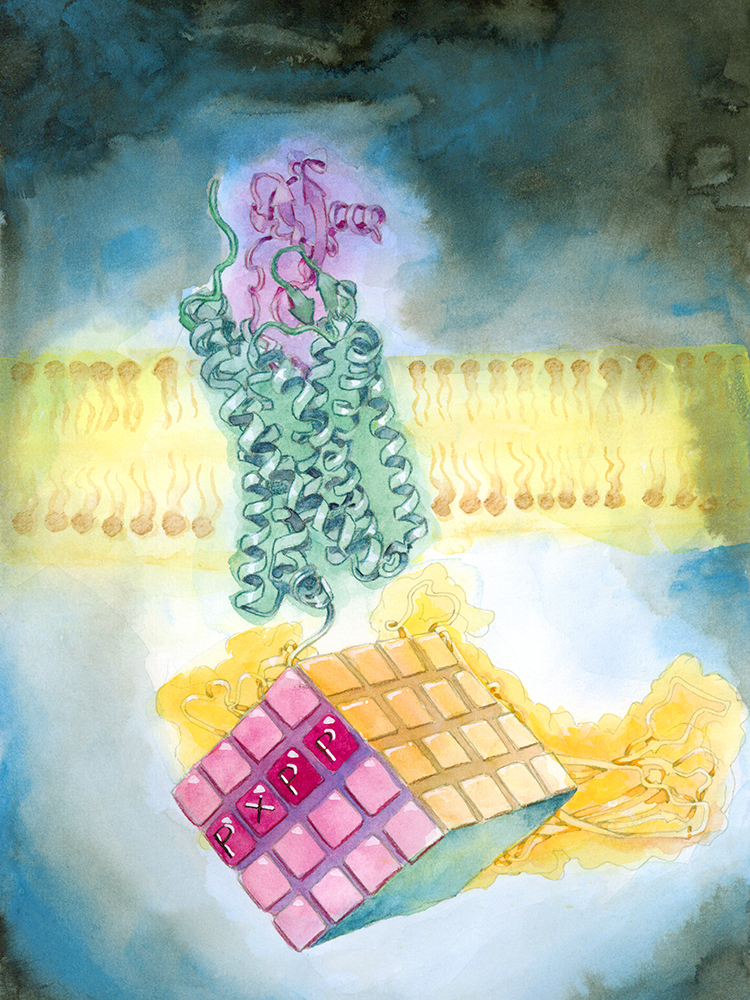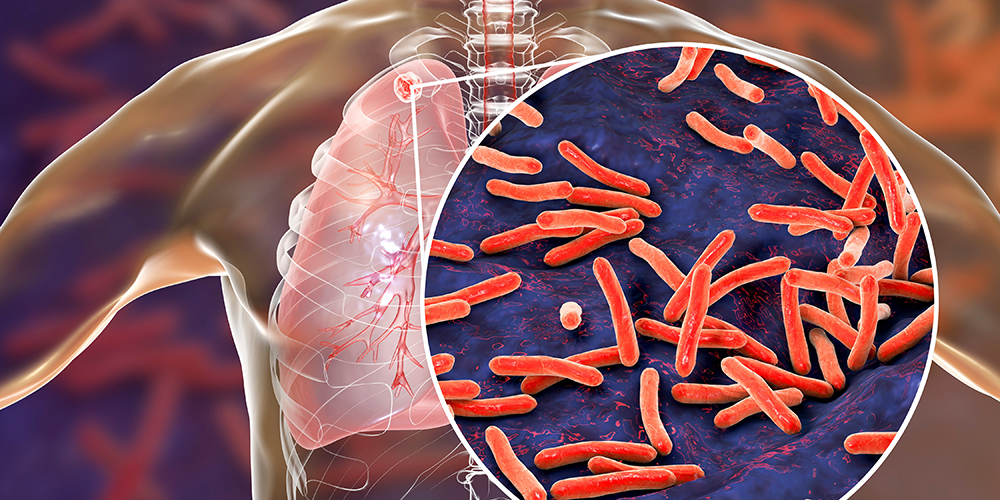Tagged for arrest: “Barcode” determines receptor’s fate
Receptor proteins serve as the “eyes and ears” of the cell. The largest receptor family are the so-called G protein-coupled receptors. They respond to highly diverse stimuli ranging from photons to hormones and odorants. Researchers at the University of Basel have discovered a unique recognition pattern that works like a barcode and tags the receptor for desensitization. By this mechanism, signaling in cells is rapidly switched off when it is no longer needed.
06 June 2023 | Katrin Bühler
Odors, light, hormones and a tremendous variety of signaling molecules are recognized by a large family of cell receptors, known as G protein-coupled receptors (GPCRs). They are located on the cell surface and transduce signals into physiological outputs, for example, a rapid heartbeat triggered by fear or inflammation caused by infections. Due to its crucial role in many vital processes, this receptor family is implicated in a wide range of diseases, such as depression, cancer, inflammation, or cardiovascular diseases.
Humans have more than 800 GPCRs in their body. They are the targets of more than one third of all approved drugs, comprising the most important and successful therapeutics against many diseases, including AIDS and hypertension. The ever-increasing understanding of the exact molecular mode of action of GPCRs is currently fueling the development of many completely new therapeutic avenues.
What is not well known at present is how active GPCRs are stopped in their action when their signal is no longer needed. In collaboration with researchers at the Indian Institute of Technology, the team led by Professor Stephan Grzesiek at the Biozentrum, University of Basel, has now identified a key recognition motif that decides the fate of the activated receptor for desensitization and possible degradation. Their findings have recently been published in “Molecular Cell”.
“Barcode” for receptor recognition
For our body, it is indispensable to turn off active receptors and thus stop signaling. For example, the heart rate must return to normal after the danger has passed. “The turn-off and removal of the hundreds of different GPCRs are accomplished by only two intracellular proteins, known as arrestins – this name comes from the word ‘arrest’,” explains Dr. Polina Isaikina, first author of the study. “We have now identified a biochemical recognition pattern, a so-called phosphoresidue cluster, responsible for robust arrestin recruitment in many GPCRs.” This specific pattern works like a barcode and determines whether the receptor will be degraded or recycled in the cell.
In their study, the scientists investigated the CCR5 receptor, a well-known member of the GPCR family. This receptor on the surface of immune cells is highly important in orchestrating the immune response and a key anti-HIV drug target. “We employed many different methods, including X-ray crystallography, nuclear magnetic resonance spectroscopy, as well as biochemical and cellular assays to identify a highly specific phosphorylation motif within the intracellular CCR5 tail. This motif is responsible for tight arrestin2 binding,” explains co-first author Ivana Petrovic. “This strong interaction then tells the cell to degrade the receptor rather than recycle it.”
“Barcode” for predicting receptor’s fate
Due to its crucial role in inflammation, removing active CCR5 receptors is essential to mitigate the harmful effects of inflammatory responses. The elucidation of different biochemical patterns enables the researchers to predict the functional outcomes – degradation versus recycling.
“Our findings provide new insights into the fundamental processes underlying cellular signaling. This knowledge could help to develop novel therapeutic strategies. For example, one could try to modulate immune receptor signaling in a highly specific manner and thereby prevent long-term damage caused by inflammation,” emphasizes Polina Isaikina.
Original publication
Polina Isaikina, Ivana Petrovic, Roman P. Jakob, Parishmita Sarma, Ashutosh Ranjan, Minakshi Baruah, Vineet Panwalkar, Timm Maier, Arun K. Shukla, Stephan Grzesiek.
A key GPCR phosphorylation motif discovered in arrestin2•CCR5 phosphopeptide complexes.
Molecular Cell (2023), doi: 10.1016/j.molcel.2023.05.002



